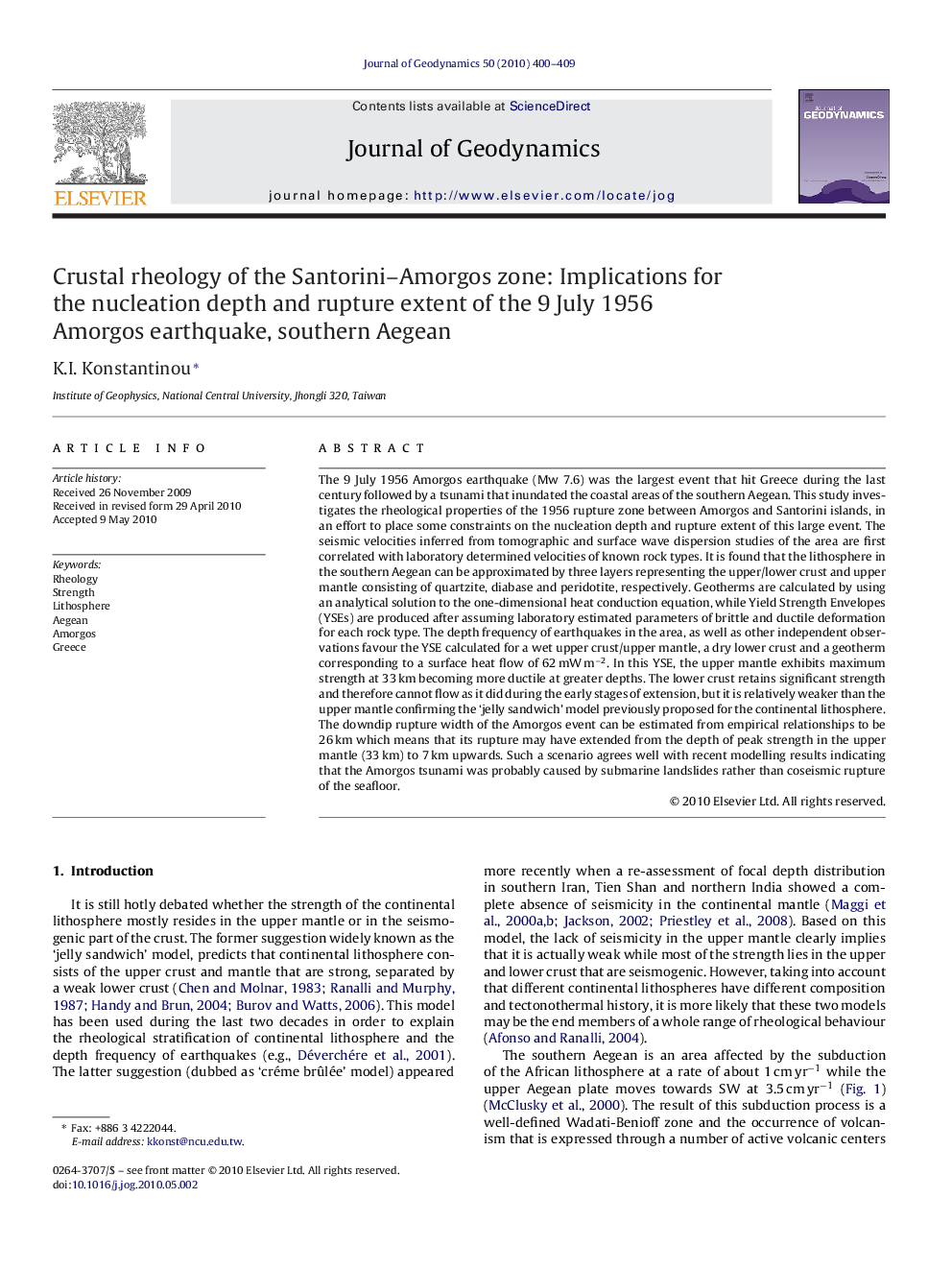| کد مقاله | کد نشریه | سال انتشار | مقاله انگلیسی | نسخه تمام متن |
|---|---|---|---|---|
| 4688490 | 1635797 | 2010 | 10 صفحه PDF | دانلود رایگان |

The 9 July 1956 Amorgos earthquake (Mw 7.6) was the largest event that hit Greece during the last century followed by a tsunami that inundated the coastal areas of the southern Aegean. This study investigates the rheological properties of the 1956 rupture zone between Amorgos and Santorini islands, in an effort to place some constraints on the nucleation depth and rupture extent of this large event. The seismic velocities inferred from tomographic and surface wave dispersion studies of the area are first correlated with laboratory determined velocities of known rock types. It is found that the lithosphere in the southern Aegean can be approximated by three layers representing the upper/lower crust and upper mantle consisting of quartzite, diabase and peridotite, respectively. Geotherms are calculated by using an analytical solution to the one-dimensional heat conduction equation, while Yield Strength Envelopes (YSEs) are produced after assuming laboratory estimated parameters of brittle and ductile deformation for each rock type. The depth frequency of earthquakes in the area, as well as other independent observations favour the YSE calculated for a wet upper crust/upper mantle, a dry lower crust and a geotherm corresponding to a surface heat flow of 62 mW m−2. In this YSE, the upper mantle exhibits maximum strength at 33 km becoming more ductile at greater depths. The lower crust retains significant strength and therefore cannot flow as it did during the early stages of extension, but it is relatively weaker than the upper mantle confirming the ‘jelly sandwich’ model previously proposed for the continental lithosphere. The downdip rupture width of the Amorgos event can be estimated from empirical relationships to be 26 km which means that its rupture may have extended from the depth of peak strength in the upper mantle (33 km) to 7 km upwards. Such a scenario agrees well with recent modelling results indicating that the Amorgos tsunami was probably caused by submarine landslides rather than coseismic rupture of the seafloor.
Journal: Journal of Geodynamics - Volume 50, Issue 5, December 2010, Pages 400–409